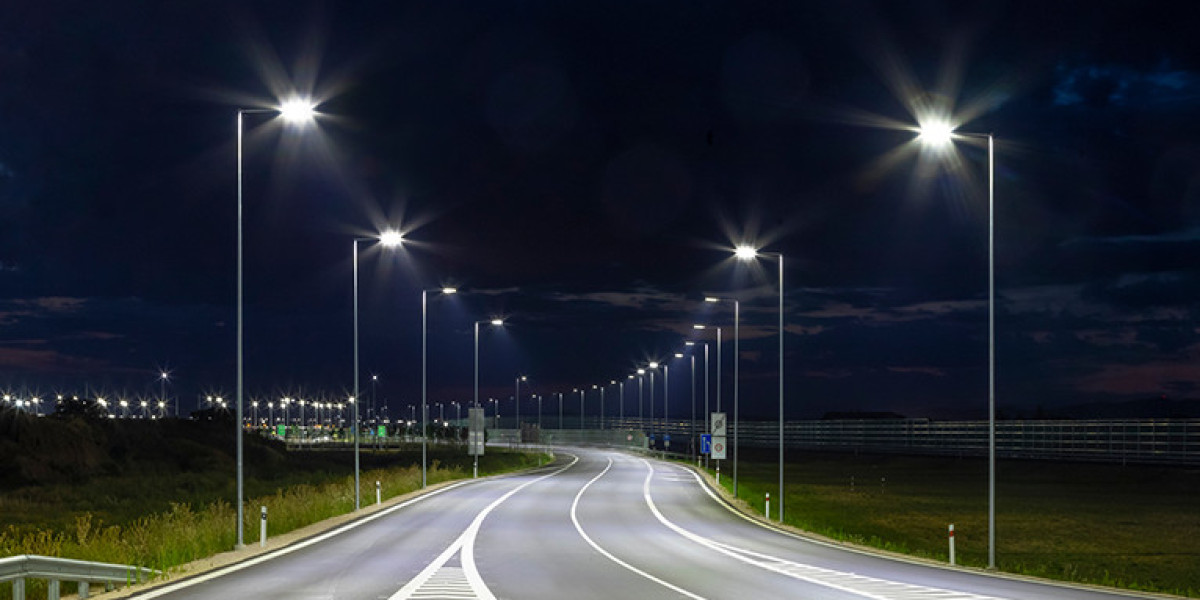Street lighting plays an essential role in enhancing the safety, security, and visual appeal of public spaces. Properly installed street lighting improves nighttime visibility for pedestrians, drivers, and cyclists, reducing accidents and crime rates. This blog will guide you through the basics of street lighting installation Los Angeles, including its importance, installation process, key considerations, and maintenance.
Why Street Lighting is Important
- Safety and Security: Well-lit streets can significantly reduce the number of traffic accidents and deter criminal activities, making communities safer.
- Improved Visibility: Street lights help ensure that roads, intersections, and sidewalks are clearly visible during the night, benefiting both drivers and pedestrians.
- Community Aesthetics: Street lighting also adds to the visual appeal of urban areas, enhancing the overall ambiance and making neighborhoods more inviting after sunset.
Street Lighting Installation Process
Street lighting installation involves several stages, from planning to actual implementation. Below is an overview of each step.
1. Planning and Design
The first step involves planning the layout and determining the lighting requirements. During this phase, the lighting designer assesses factors like:
- Road Type: Highways, residential streets, and pedestrian walkways have different lighting needs.
- Illumination Levels: The designer calculates the required level of brightness, ensuring even light distribution to avoid dark spots or glare.
- Pole Placement: The spacing and height of lighting poles are crucial to providing optimal coverage. This step also involves ensuring that poles dont obstruct traffic or pedestrian movement.
2. Selection of Lighting Fixtures
Choosing the right type of lighting fixture is essential. The most common types are:
- LED Lights: Energy-efficient, long-lasting, and environmentally friendly, LED lights are the top choice for modern street lighting systems.
- High-Pressure Sodium Lamps (HPS): These lights provide a characteristic yellow-orange glow and have been widely used in the past. However, they are being gradually replaced by LEDs due to the latter's superior efficiency and lifespan.
- Smart Lighting Systems: More recently, smart street lights have been gaining popularity. These lights are equipped with sensors to adjust brightness automatically based on the presence of pedestrians or vehicles.
3. Electrical Wiring and Pole Installation
- Wiring: Underground wiring is typically used for street lighting, as it is safer and more aesthetically pleasing than overhead wiring. Conduits are laid underground to protect cables from external damage.
- Pole Installation: Poles are erected at predetermined intervals. They need to be sturdy and well-anchored to withstand various weather conditions, especially in windy areas.
4. Fixture Mounting and Testing
Once the poles are in place, the lighting fixtures are mounted at the top. Electricians then connect the fixtures to the power supply, after which the system undergoes thorough testing. This includes:
- Illumination Testing: Verifying that each light is functioning properly and illuminating its designated area.
- Power Testing: Ensuring that the power supply is stable and the system is energy-efficient.
- Safety Checks: Inspecting all components to confirm that they meet safety standards.
Key Considerations in Street Lighting Installation
- Compliance with Regulations: Municipalities often have specific requirements for street lighting, including brightness levels and placement guidelines. Its essential to comply with local regulations to ensure public safety.
- Environmental Impact: Street lighting can impact local wildlife, especially in sensitive areas. Using shielded fixtures and directing light only where needed can minimize light pollution and its effect on nocturnal animals.
- Energy Efficiency: Choosing LED lights and incorporating smart controls, such as dimmers or motion sensors, can significantly reduce energy consumption and lower operating costs.
Maintenance of Street Lighting
Regular maintenance is vital to ensure that street lights function correctly and efficiently. Common maintenance activities include:
- Cleaning Fixtures: Dust and debris can reduce the efficiency of lighting fixtures. Regular cleaning helps maintain optimal light output.
- Replacing Bulbs and Components: Although LED lights last for many years, they may eventually need replacement. Additionally, electrical components, such as wiring or connectors, may degrade over time and need servicing.
- Inspecting Poles and Wiring: Poles must be inspected for signs of rust or damage, while underground wiring should be checked for any wear or external damage.
Benefits of Modern Street Lighting Installation
- Reduced Energy Costs: The transition to energy-efficient LED lighting results in significant reductions in energy consumption and utility bills for municipalities.
- Lower Maintenance Costs: LEDs not only last longer but also require less frequent maintenance, reducing labor and replacement costs.
- Smart Integration: Modern street lights can be integrated with smart city solutions. For example, sensors can be used to collect data on traffic flow, weather conditions, and air quality.
Conclusion
Street lighting installation is a critical aspect of urban development, contributing to the safety, functionality, and aesthetics of public spaces. With advances in technology, street lighting is becoming more efficient, cost-effective, and environmentally friendly. By choosing the right lighting fixtures, planning carefully, and adhering to maintenance schedules, cities can provide safe and inviting environments for their residents and visitors.








